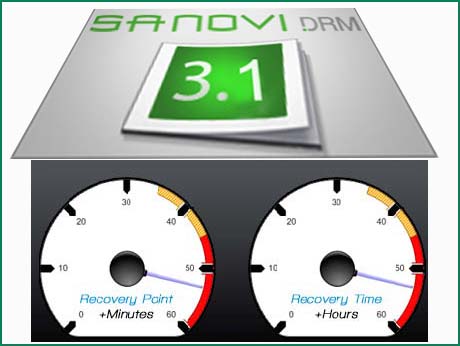
Sanovi’s India-fuelled disaster recovery management solutions, now touch the ‘cloud’
Q: Will you need collision coverage?
James Bond: Yes.
Q: Fire insurance?
Bond: Probably.
Q: Personal injury?
Bond: Accidents do happen.
Q: They frequently do — with you
(dialogue from the James Bond film, “Tomorrow Never Dies”)
Accidents, as James Bond admits, do happen. In business, it is not enough to buy a comprehensive insurance policy. To survive, one must recover fast – often within seconds of disaster striking – if business continuity is to be maintained.
But like so much else in the enterprise arena, DRM or Disaster Recovery Management has to recognise the increasing attractiveness that cloud based operations hold for many corporate.
Which is why Sanovi, an emerging leader in DRM, whose solutions are crafted in India for a global clientele, has subtly morphed some of its offerings so that managed service providers who work in the Software as a Service mode, can leverage its products.
Sanovi’s flagship is the DRM suite and the latest version 3.1, includes Sanovi DRM Recovery Manager – for automation of DR Drills and recovery workflows, Sanovi DRM Monitor – for real-time visibility into recovery health, RPO metric and Sanovi DRM Reports – Standard and custom reports for compliance on IT recovery readiness.The new features in the Sanovi DRM™ product suite include Custom Reports, Large File Replication Support, Enhancements to the Recovery Automation Library that offers pre-packaged recovery actions, Workflow automation engine for the Recovery Manager and the pre-packaged best practices template for Oracle Database protection using Full Database Replication.
Sanovi has also put in place a new call logging and call escalation procedure to streamline the call management and speedy call resolution procedure. The Sanovi 360 is a Service Desk that is available 24 X 7 and is manned by experts that to speedily ensure customers Disaster Recovery solutions are in constant state of readiness.
As part of the DR Cloud program, Sanovi will license its software to managed services partners, provide the required training and integrate with their help desk to enable the partner to offer comprehensive DR solutions with end-to-end service levels to the end user.
Sanovi ( www.sanovi.com ) has a growing base of enterprise production customers which include ICICI Bank, HDFC Bank, Corporation Bank, Indian Overseas Bank, Vijaya Bank, Yes Bank, Bank of Baroda, L&T, Essar, etc.
Tech background Note on DRM: Today’s IT operations are complicated and dynamic. Every day, things change in your environment that could potentially cause restarting operations at a remote site to fail. The worst time to find that out is when you need your recovery solution to perform as designed to help you get your business back up and running after an outage or disaster.
DRM is the process of designing and managing a set of application recovery processes designed to meet your business recovery objectives.
Application recovery service level is measured by two metrics, Recovery Point Objective (RPO) and Recovery Time Objective (RTO). DRM is the process of designing, monitoring, validating and testing application recovery process to meet set recovery objectives
RPO: The amount of data a business application can afford to lose before it adversely starts impacting the business. As an example, a financial trading application may have RPO of 0 seconds, i.e. the business cannot afford to lose any data for this application.
RTO: The amount of time a business application can be unavailable before it adversely impacts the business. As an examples, a bank cannot afford to have a financial trading application unavailable for more the two hours.
Dec 25 2009